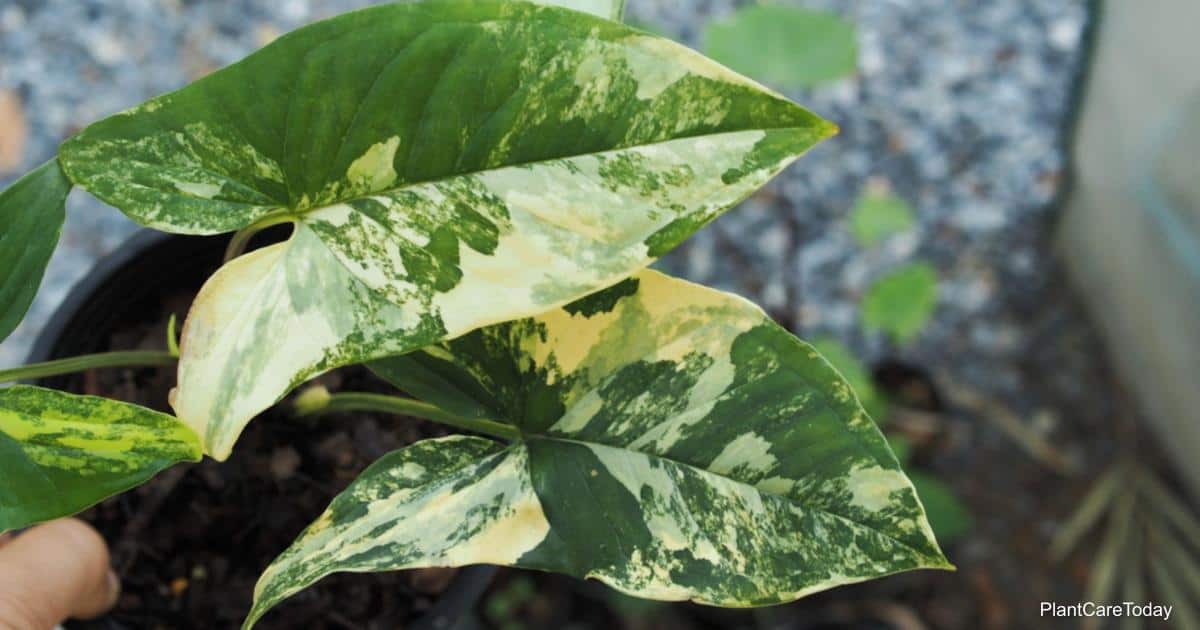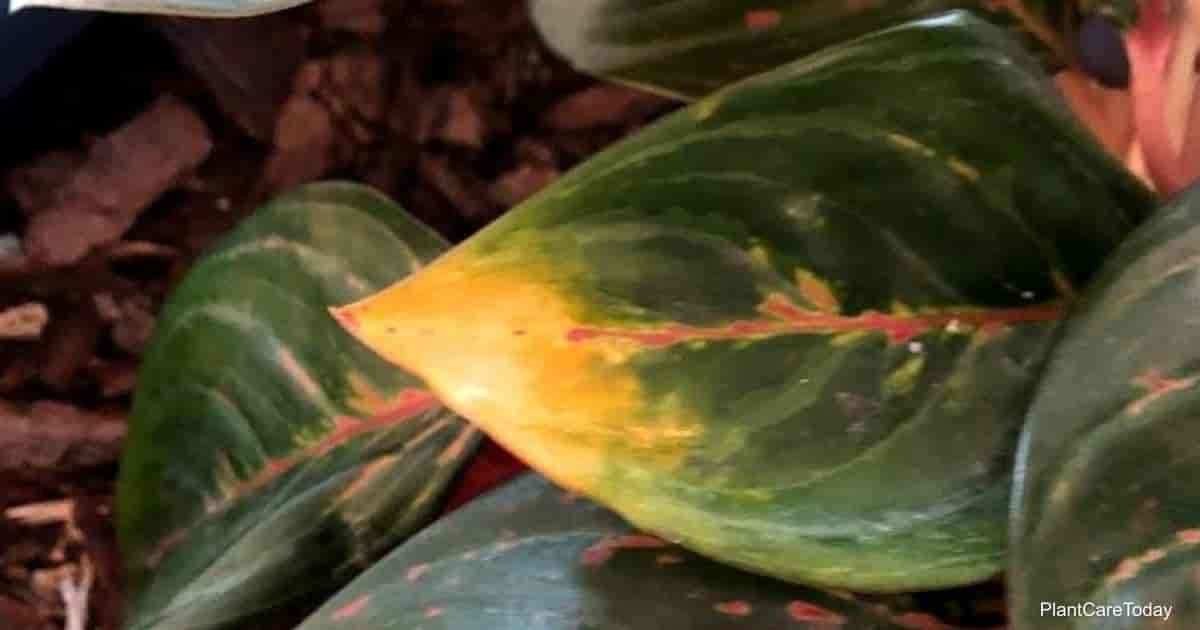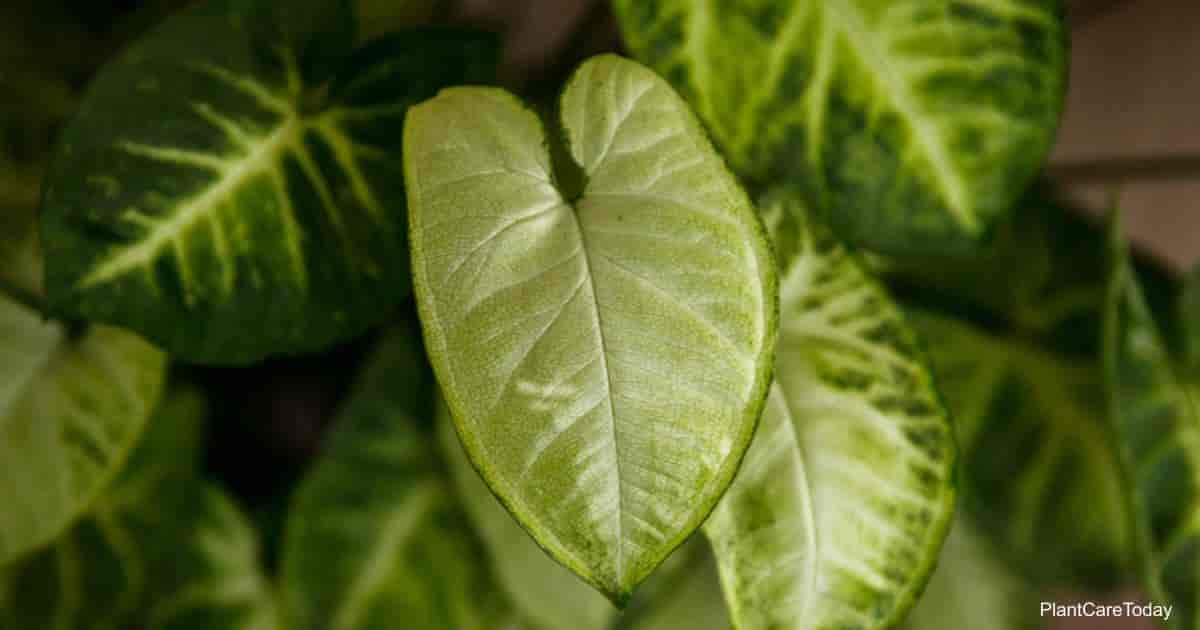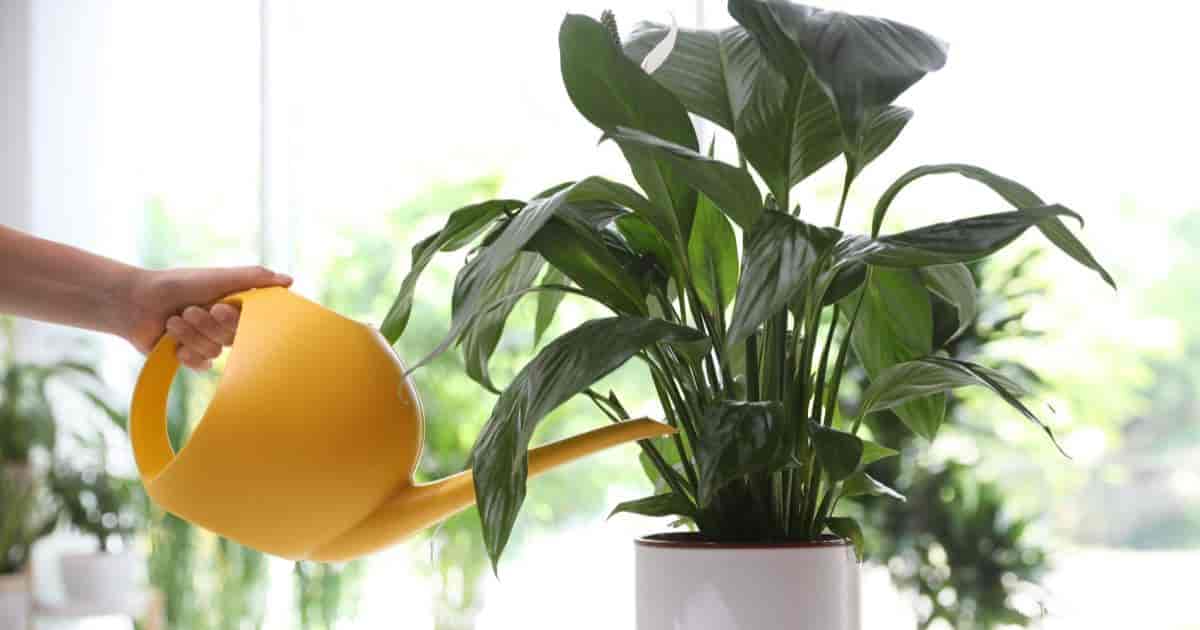Syngonium Variegata (sin-GO-nee-um var-ee-GAY-tuh), also known as Syngonium podophyllum albo-variegatum or Variegated Arrowhead Vine, is a climbing vine hailing from Bolivia, Brazil, and Mexico.
You may also hear these plants referred to as Arrowhead Plant or Vine, Goosefoot, Nephthytis, Podophyllum, or simply Syngonium.
This tropical, perennial plant is a member of the Araceae family of plants.
Syngonium Variegata Care
Size And Growth
Arrowhead plant grows in a single stem that can reach a length of 25′ feet in the wild.
It will probably top out at about 6′ to 7′ feet in your home. You can discourage rampant growth with the use of a growth inhibitor.
Some dwarf varieties (e.g., Pixie and Red Spot) have been developed to have more controlled growth.
Flowering And Fragrance
Mature plants may occasionally produce an odorless, unremarkable flower that looks like a Peace Lily’s bloom.
This is quite rare in Syngonium plants away from their natural setting, though.
Foliage
The plants’ large, arrowhead, triangular or heart-shaped leaves are variegated in green, white, pink, cream, and maroon shades.
The Latin root of the word “variegation” means “diversity of colors.”
There are between twenty and thirty different species of Syngonium Variegata, each with its distinctive leaf shape, pattern, and coloration.
Among them are:
- Christmashas light green leaves with markings in shades of deeper green, cream, and pink.
- Confetti Tricolorhas lime green leaves with pink and yellow splotches.
- Aaron Brownhas deep green, roundish/triangular leaves with chocolaty variegation.
- Brocanteis another burgundy/chocolate and green variety.
- Spear Point has distinctly sharp leaves spreading from the central vein with creamy colors.
- Arrowhas bright green leaves with creamy veins.
- Neonproduces pale green, heart-shaped leaves that deepen to a rosy pink as they mature.
- Regina Redis similar to Neon, but its shades of pink are more subtle.
- Imperial Whitehas striking, large bi-color white/deep green leaves.
- Butterflyhas almost entirely white leaves with a lacy green edge.
- Tiffanyhas pretty pink spots in the leaves‘ centers.
- Jadeis deep green with random splashes of white.
- Pandais similar to Jade in color and markings.
- Pink Splashis similar to Jade in marking, but it is pink and green.
The patterns and colors of the leaves change as the plant matures.
Light And Temperature
The plant thrives, and variegation is at its best at temperatures of 60° to 77° degrees Fahrenheit.
Although these plants can grow in a shady setting, they will not thrive. Generally speaking, bright indirect sunlight is best, but you can go a bit darker or brighter depending on your situation.
The more light you can provide, the more vibrant the plants’ variegation will be. West or east-facing windows provide the most light.
Place the plant a few feet away from the window to prevent scorched leaves.
Watering And Feeding
Arrowhead plants should be kept slightly moist. Water lightly when the soil’s surface starts to feel dry.
Unlike many houseplants, Syngonium does best with light, frequent watering.
Take care not to allow the plant to dry out completely. If this does happen, you can submerge the pot in a tub of water to help it perk up quickly.
The plant does well at humidity levels of about 60% percent. A pebble tray is recommended to help maintain these high humidity levels.
Be sure not to let the bottom of the pot touch the water in the pebble tray.
Use a diluted solution of standard houseplant fertilizer (1-2-1) on your Arrowhead plant monthly throughout the year. Increase this to 2 times monthly in the spring and summer months.
Do not fertilize immediately after potting or repotting your plant. Instead, wait a couple of months.
Soil And Transplanting
Any good quality, light, the airy commercial potting mix will do well for these plants. It’s good to place a layer of pebbles at the bottom of the pot to facilitate good drainage.
Always use a container that has plenty of drainage holes. Breathable materials, such as unglazed terra cotta, are preferable to plastic or ceramic.
When potting up cuttings, place two or three in one pot if you want a plant with a bushier appearance.
Repot annually in the springtime. Increase pot size only slightly with each repotting.
Grooming And Maintenance
Established plants may be trimmed and pinched back to discourage rambling and encourage a more compact look.
Trim off dead or damaged leaves and stems as needed throughout the year.
Do not trim away aerial roots.
How To Propagate Syngonium Variegata?
It is easy to propagate Syngonium of all sorts from cuttings.
You can place cuttings in water or soil for excellent results. Ensure each cutting has a couple of leaves and two or three nodes.
You can start cuttings all year round, but spring is the best time to start new plants, as with most plants.
Warmer temperatures (70° to 77° degrees Fahrenheit) encourage better growth.
Syngonium Variegata Main Pest Or Disease Problems
If you can get the watering just right, you are unlikely to encounter any problems with this plant. Underwatering can be dealt with by providing a good drink.
Overwatering can lead to problems involving:
- Bacteria
- Fungus
- Insect pests
Keep a close eye on your plants. At the first sign of root and stem rot, do the following:
- Remove the plant from your collection and unpot it.
- Trim away damaged roots, stems, and leaves.
- Repot the plant in entirely fresh soil and a clean pot.
Treat for fungal infection. If you have seen any signs of insect infestation, treat for that. Keep your plant quarantined until it is free of pests and has begun to thrive again.
Is The Plant Considered Toxic Or Poisonous To People, Kids, Pets?
This plant’s milky sap contains calcium oxalate and can irritate your skin, so be sure to wear gloves and wash up after handling, pruning, or repotting.
The sap is also toxic to cats and dogs.
Is The Plant Considered Invasive?
It can be invasive in areas similar to Syngonium’s native land (e.g., the Pacific islands, Singapore, South Africa, Australia, and the Southern United States).
If you live in a tropical or semi-tropical setting, keep a close watch on this plant if you allow it to spend spring and summer outside.
Dropped stems and leaves could take root and ramble out of control. [source
Suggested Syngonium Variegata Uses
The best use of Syngonium is as a houseplant. In non-tropical settings, the plant is not winter hardy.
However, you could put it out on your covered porch or patio to enjoy the spring and summer as a planter or hanging basket plant.
Indoors, it can be nicely trained to climb a pole or trellis, ramble around a window or travel around a room on high shelves. With trimming, it can make an excellent pedestal plant.
Interestingly, Syngonium is hailed as the perfect plant for people practicing Feng Shui because of its five-lobed leaves, smoothly flowing growth habits, and indomitable spirit.
Credit : Gary Antosh (https://plantcaretoday.com/syngonium-variegated.html)





